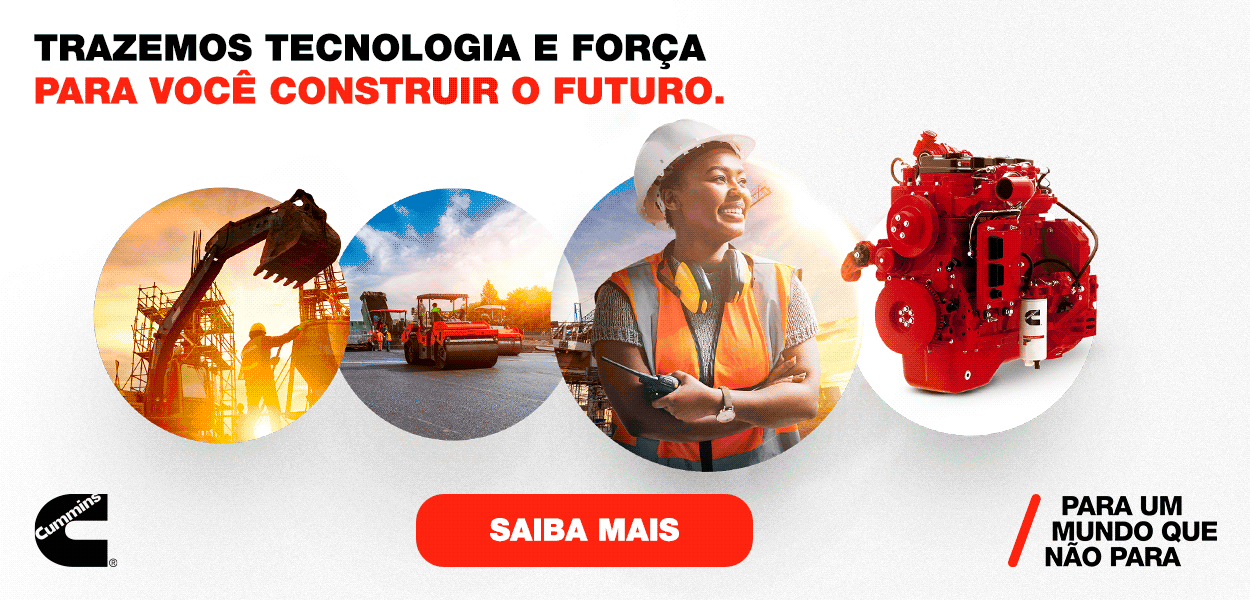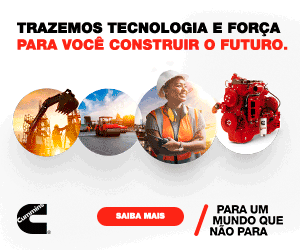Total control
Advanced tools allow earthmoving equipment to carry out a more smooth and accurate operation, reducing costs and increasing productivity
Still progressing on a slow pace in the country, machine control tools (operating orientation and automation) allow the possibility of getting millimeter finishing precision in earthmoving works. By these reasons, their use is being increased in several fronts, mainly in the construction of roads with horizontal curves and slopes, where smoothness and precision of movements are essential.
According to John Fierro, sales representative for construction of Trimble, about 80 percent of the companies that work in USA and Europe are interested in installing these systems, and 20 percent of them had already installed them. In Brazil, the expert says that there are difficulties in establishing the current demand, but he estimates that it is around 0.1 percent of the total fleet, with the systems being used mainly in equipment responsible by earthmoving end finishing. “But in the next ten years these technologies will probably increase, maybe up to 5 percent of the operating fleet. This would be an excellent progress considering the size and the variety of our fleet”, says him.
To allow a quantification of this market in global terms, Robson Augusto, South America business manager of Leica Geosystems says that machine control technologies—developed during a little more than 15 years—are being improved in accordance with the construction market demand. Data presented by him show that 34 percent of the works are in the area of Asia and Australia, in a ranking that also includes Europe and USA (both with 24 percent). Latin America would represent, however, only 8 percent of this total. “It is important to point out that the manufacturers do not see these technologies as a solution for the lack of qualified operators but as a complement that helps to improve quality in works”, points him. “This is important because automation systems do not carry out all the works but interact with the operator in accordance with each project, replying in the panel the position of each sensor.”
According to José Luiz Trottenberg, managing partner of Getefer, dealer of attachments for construction and mining that represents the brand Movax (pile drivers) in Brazil, automation represents an important improvement for the equipment market, a solution that improves work quality and leads to more accurate and safe results. “Using the technology, we could improve dynamic operation in large works, where operators’ turnover is too high”, exemplifies him. “And this is just the point where technology supports less-qualified operators in generating superior and safer results.”
APPLICATIONS
In earthmoving works, the higher responsibilities are on earthmoving and end finishing, when equipment such as crawler tractors and motor graders use this type of system, that gives information to the operator to ensure—based on information about volume, area, elevation and position, for example—more speed and accuracy in his work.
In the evaluation of Augusto, from Leica, one of the direct benefits of these technologies is the reduction of operating risks, since that—when using them—it is not necessary to maintain a person aside the machine to support the operator. The solution also reduces contract risks due to the more accurate results obtained. In addition, operating times may be reduced up to more than 60 percent, mainly due to the quality of work finishing. “These factors reduce operating costs, what is an important attractive for Brazilian contractors”, explains him.
For Fierro, from Trimble, technologies of orientation and machine control may be classified in two groups. The first one includes the simplest operations, where the position of the installed attachment does not matter. In such cases, 2D technologies supply only information about elevation and distance control, which are enough in most works. “An example is the use of laser for orientation”, says him.
The system referred by Fierro uses a rotating emitting device with reach of 360 degrees that sends positioning signals to a receiver installed in the equipment. Using this technology, an accuracy of 5 to 10 mm may be achieved in finishing.
Leica business manager adds that the system looses accuracy only in the signal reach (maximum 200 m) and in the reading capacity in slopes with more than 20 degrees, since the laser communication is always horizontal. “Due to these reasons, these systems are more used in end finishing, when the soil leveling was already done”, says Augusto.

Av. Francisco Matarazzo, 404 Cj. 701/703 Água Branca - CEP 05001-000 São Paulo/SP
Telefone (11) 3662-4159
© Sobratema. A reprodução do conteúdo total ou parcial é autorizada, desde que citada a fonte. Política de privacidade














